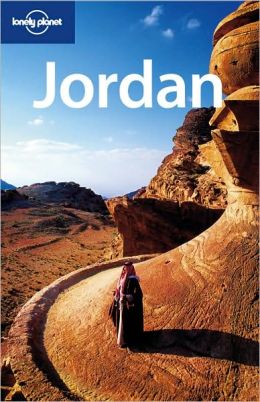
The seventh edition of Lonely Planet’s guide to Jordan - by Jenny Walker and Matthew D. Firestone - was published in 2009. I had it with me on a trip to
One thing I
checked was the price level. In many cases the price to enter a museum or a
historical site is still the same as it was in 2009. The typical price is 1 or
2 Jordanian Dinars.
[1 JD is almost the same as 1 Euro.]
One major exception
is the price to enter Petra
1 day = 50 JD
2 days = 55 JD1 day = 50 JD
3 days = 60 JD
This guidebook is in many ways useful and reliable, but I have to mention a few things which bother me. There are mistakes and misunderstandings which should not be found in any book – let alone in the seventh edition of a book.
Let me give
you some examples:
(1) On page
131 we are told that “Christianity became the official state religion under
Emperor Constantine in AD 324.”
An almost
identical passage appears in the timeline on the bottom of page 40.
This is a
common misunderstanding: The Rough Guide to Jordan (2009) makes the same claim - no less
than three times: pp. 155, 265, and 366. The official guide, who showed us
around on the Citadel in Amman,
But it is
not true. Constantine
(2) On page
100 the Roman odeon in Amman
(3) On page
128 we are told that the Circus Maximus in Rome
(4) On page
159 we are told the Roman emperor Caracalla ruled “AD 198-217.” This is not true. Caracalla was
born in 188, he was named Caesar in 196 and Augustus in 198, but he did not
become emperor until the death of his father Septimius Severus in 211.
(5) On page
169 we find the following passage:
“For the minority Shiite, the lack of
discord in the Muslim nation and the denial of Ali’s heirs were grave
injustices that simply could not be forgiven.”
Something
is wrong here: It cannot be “the lack of discord.” It must be “the lack of
unity” or perhaps “the discord”
(6) The map
of Madaba (on page 185) gives the distance to two locations further south: “To
Karak 86 km ” and “To Mukawir 86 km .” The first one is correct, but the
second is wrong. The distance from Madaba to Mukawir is only about 33 km .
(7) The
glossary on pp. 338-339 claims the word “decapolis” comes from Latin. This is
not true; it comes from Greek.
If you
think these mistakes are minor, please remember that this is the seventh
edition of the book. Mistakes like these should have been discovered and
corrected long ago.
There is a
section on car travel (pp. 317-321) and in addition a brief section on maps
(page 297), but one important suggestion is missing in both cases: if you are
going to drive by yourself, you should get a GPS with your rental car. This may
help you even more than a map. The price is about five JD per day.
In some
cases the book’s instructions for drivers are insufficient. For the desert
castle Qasr Al-Hallabat, all we get is this:
“If you’re driving, the castle is
located off Route 30.”
This is not good enough, because
this place is quite difficult to find, as I know from personal experience.
The castle
was not in our GPS. We had to ask some local people to find it.
On the
cover of the seventh edition there is a picture of a Bedouin standing on
top of the Monastery in Petra (see above)
You are not
allowed to use the footpath and the steps which lead to the top of the
monument, because it is dangerous. On the left side of the monument, where the
footpath begins, there is a sign with the text “No climbing.” But this picture may
inspire some adventurous traveller to ignore the warning and climb the steps in
order to stand where the Bedouin is standing in the picture.
The Monastery
is presented on page 230, but the text has no warning against climbing the
steps. The more I think about it, the more I feel it is irresponsible to use
this photo. Do not attempt to copy what you see on the front cover!
For these
reasons I can only give the book four out of five stars.
No comments:
Post a Comment